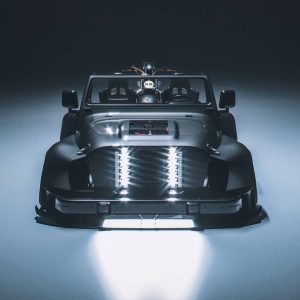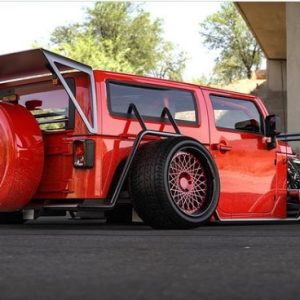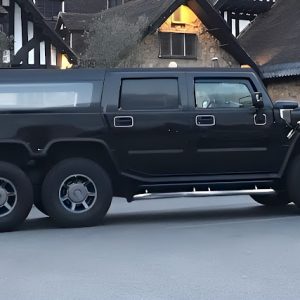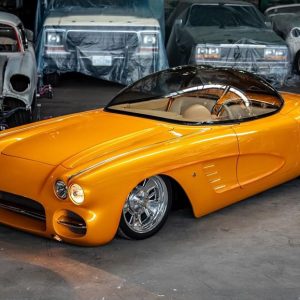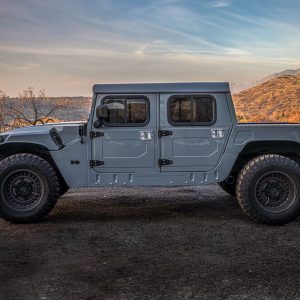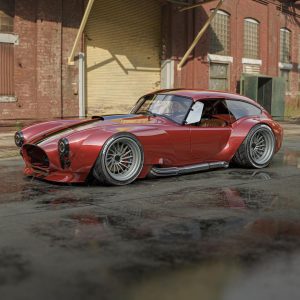If you live where the trails are tight and the riding days are long, the 1,000-cc RZR XP is the side-by-side to buy.

Performance side-by-sides are only getting wilder as manufacturers throw more power at them than you get in some sports cars. It’s a great time to love off-roading, but there’s a slim chance you actually need 200-plus horsepower in a 1,600-pound side-by-side, especially if you live where there aren’t any sand dunes. That’s why the 2024 Polaris RZR XP exists, and while it used to be the top dog, it’s now the value play for anyone who treasures mid-range power and trail capability over top speed.
Let me just tell you now: It gets the job done. Not only does it make quick work of rough and bouncy trails, but it does so in a way that won’t totally wear you out, even after hours of driving. Sure, you might feel the after-effects of gripping the steering wheel tight and bracing for impacts that aren’t nearly as hard as you thought they’d be, but it’s a total hoot that makes you think, “Yeah, this is plenty.”
That’s not to say it will never bottom out—it will. And if you’ve driven something wicked fast like the RZR Pro R, you might find yourself missing the extra go-power on fast gravel roads. But the RZR XP fills its role well, and for the vast majority of folks who just want to hit the trail, it’s more than enough machine.
The original Polaris RZR XP 1000 kind of started the super UTV trend that’s been picking up steam ever since. People hadn’t experienced this type of power in a side-by-side when it launched back in 2014, and engines this size were a lot less common. Now it’s the gateway for people who want to go fast, but it’s arguably the best option for those who spend most of their time in the woods instead of in the sand; the RZR Turbo R or Pro R is made for folks in the latter category.
The 2024 RZR XP looks different from the model it replaces because it is different. There’s very little carry-over here as this generation is meant to be an all-around improvement in a comprehensive sense rather than a general one. Its exterior design is new and the gaping-maw front end isn’t nearly as egregious as before. There are still a ton of sharp angles and creases, but to me, it looks less brash in stock form. Don’t worry, though, because there are a ton of accessories to take it over the top.

Everything is nicer inside, too. It’s ergonomic with bolstered yet comfy seats that can be taken out by pulling a single strap. I’m a big dude at six-foot-five and 285 pounds, and even with a helmet on, the top of my head never rattled off the roll cage. Polaris even paid close attention to the footwell to make sure you’ve got plenty of dead pedals to rest your left foot on during a long day of riding.
Full doors come standard, a roof is optional, and in terms of dry storage, there’s more than enough by way of various cubby holes and latching compartments. The touchscreen infotainment display pulls double duty as both the gauge cluster and command center for features like trail navigation and the stereo. It’d be nice to have dedicated physical gauges so you could monitor temperatures and whatnot while also viewing the map, but Polaris has gone another route.
This 1,000-cc Gen 2 ProStar engine is really a darling on its own with 4 hp more than before, plus an improved CVT with a clutch out of the hard-working Polaris Ranger. It’s geared lower to keep you in the power more often, boosting the rig’s capability and your confidence in technical situations. I was more than happy with the powertrain combo during our long ride at Tennessee’s Windrock Park, which features a ton of elevation change, not to mention more mud and dust than I thought was ever possible in the same place.
The rig I drove all day was an RZR XP Ultimate with 30-inch Trailmaster X/T 2.0 tires and a bumping Rockford Fosgate Stage 3 sound system. It’s spiffier than the Sport and Premium trims, so I relied on the seven-inch Ride Command touchscreen to fill me in on what was happening with my machine and everyone else’s. Our riding group was all linked together so we could keep track of each other and send out messages like “Use low range” when the going got especially rocky.

I took it slow at first because truthfully, I wasn’t sure how the RZR XP would handle the huge craters in the trail that were filled with rocks, mud, or both. It took a second for me to trust the adjustable Walker Evans needle shocks, but they were dialed in pretty well considering there are 16 settings to choose from. With 16 inches of wheel travel up front and 18 inches out back, I learned what was and wasn’t fair play after half an hour or so. Although, you still need to watch out for the really gnarly dips.
Just about everything improved from there, including my morale. Thanks to those taller tires, I had 14.5 inches of ground clearance to skip right over boulders and slabs that had me wincing on the first leg of the route (Trail 28 at Windrock, if you’re curious). The pace transitioned from slow, easy-does-it to flat-out with a romp of the throttle, and I quickly started to see why this is Polaris’ most popular model. You can take in your surroundings at a crawl one second and watch them rush past you in a blur the next, which is a special feeling, especially when you look back and see how much ground you’ve covered in a day.
That’s undoubtedly the biggest difference if you’re coming from the world of Jeeps, Broncos, and what have you. It’s why you’d buy a UTV instead. At the same time, the RZR XP’s low range isn’t as low as you might be used to in a full-size 4×4. I found myself using the brakes pretty often on long downhill sections, which isn’t so much a problem as it is an extra step to be mindful of. It’ll overrun you if you don’t keep your foot close to the brake pedal, which makes crawling along a little more complicated than it could be.

Not only is the power impressive, but so is the handling. I never left four-wheel drive, but it was able to navigate tight turns around trees and tall banks of dirt without scraping the side at 64 inches wide. There were a few times when I got more sideways than anticipated—never anything I couldn’t recover—but you still have to be mindful of wheel input when matting the throttle. Electric power steering isn’t terribly communicative, but there’s plenty of feedback from literally everything else so you know what’s going on with the rig.
The 2024 RZR XP stays planted and composed thanks to a chassis that’s 25% stronger than before. Rather than bolting in the middle, the rollover protection system (ROPS, if you’re in the know) is a welded single-piece. That also helps with noise reduction, meaning you can concentrate more on the engine noise than the squeaks and rattles. It helps that it’s safer to boot
At a starting price of $20,999 not including destination for the Sport trim (the destination charge varies depending on where in the country you are), the 2024 RZR XP is seriously competitive. It’s somehow cheaper than the model it replaces, helping it beat rivals like the Kawasaki KRX while still packing a standard touchscreen display. Step up to the Premium trim and you’ll be paying $22,999 plus destination for the two-door, and if you want the Ultimate, it’ll be $25,999 before shipping and handling. The four-seaters cost more, of course, but even the loaded XP4 Ultimate tops out at $29,999.
And if you think that’s pricey, the RZR Pro R 4 Ultimate is $44,999. It’s all relative.

With all that said, I think the 2024 Polaris RZR XP is stellar. The value is there, the performance is there, and importantly, so is the comfort level, an area that’s all too often overlooked by go-fast goobers like myself. You can always get more speed or suspension out of it on the aftermarket, and Polaris offers so many accessories to enhance its usability, it’s not even funny.
I can’t say that spending nearly $30,000 on a toy is the right move for everyone, but if you have the means and want the most bang for the buck, I recommend getting this.
